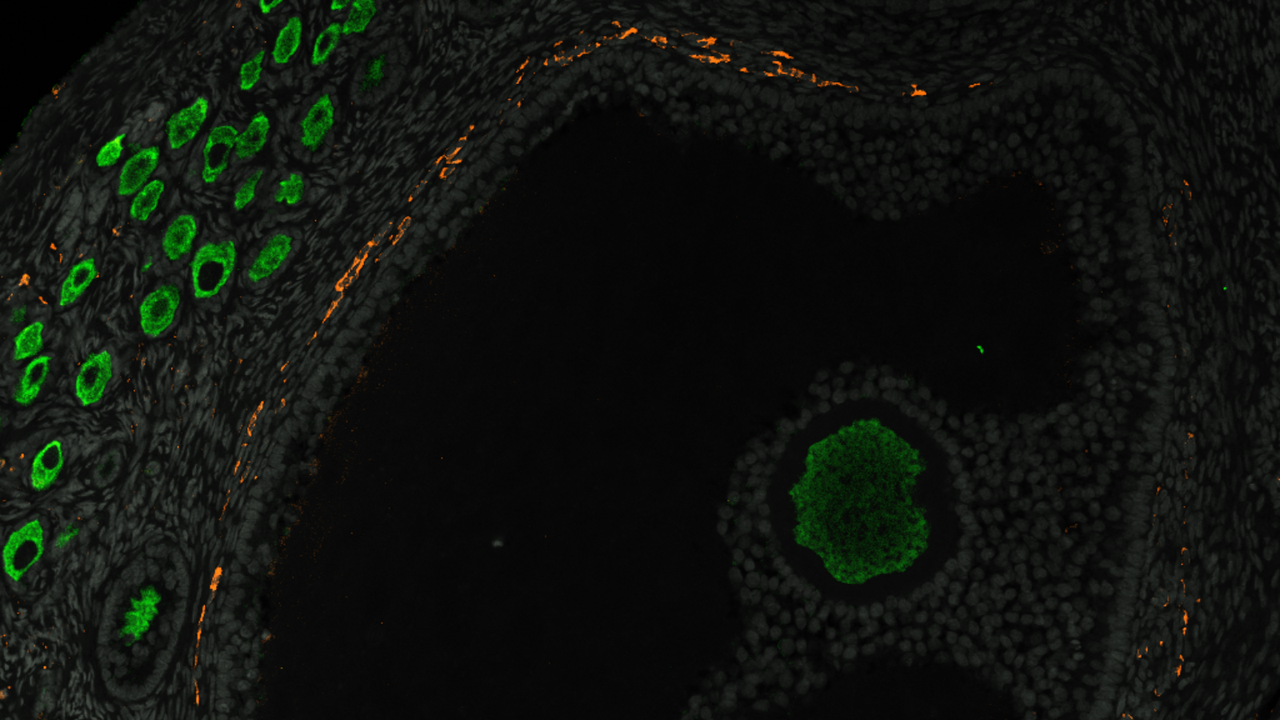
Scientists are one step closer to understanding how human ovaries develop their lifetime supply of egg cells, known as ovarian reserve.
The new research, published Aug. 26 in the journal Nature Communications, mapped the emergence and progression of the cells and molecules that develop into the ovarian reserve in monkeys, from the early stages of ovarian development in an embryo to six months after birth.
This map fills in some of the blanks in “really important areas of just unknown biology,” study co-author Amander Clark, a developmental biologist at UCLA, told Live Science.
Researchers can now use this map to build better models of the ovary in the lab to study reproductive diseases related to the ovarian reserve, she said, such as polycystic ovary syndrome (PCOS) — a complex hormonal disorder that can result in infertility.
Mysterious development
Ovaries first begin to develop in embryos around six weeks after fertilization. In the early stages, germ cells — which develop into egg cells — divide and connect to one another in complex chains called nests. When these nests burst open, individual egg cells are released and are encased by a layer of specialized cells called pregranulosa cells, which support the young eggs and signal when it’s time to mature.
These eggs encircled by pregranulosa cells are called primordial follicles, and are what make up the ovarian reserve.
Primordial follicles start to form around 20 weeks after fertilization, and cluster on the inside edges of the ovaries. When the follicles closest to the center of the ovary in these clusters mature, they grow and produce sex hormones.
So it is the primordial follicles that ensure the ovaries perform their jobs of producing mature eggs and releasing hormones, Clark said.
Multiple ovarian diseases and conditions are rooted in problems with the cells in the ovarian reserve. For example, although the exact cause of PCOS is still unknown, it involves dysfunction in the primordial follicles. And yet, very little work has been done to understand their development.
Building a map of how and when the ovarian reserve forms during pregnancy can help figure out why certain diseases and issues with fertility crop up later in life. “That’s where this study came in,” Clark said.
Related: 1st ‘atlas’ of human ovaries could lead to fertility breakthrough, scientists say
Surprise findings
To investigate how ovarian reserves originate in primates, Clark and her team looked at a monkey species that is physiologically similar to humans. This makes it a good stand-in for what happens developmentally in humans, she said.
Then, the team analyzed the position and molecular fingerprint of the ovarian cells to understand the critical events in the formation of the ovarian reserve.
They found that pregranulosa cells formed in two waves, but it was only during the second wave, between days 41 and 52, that pregranulosa cells formed that would go on to swarm the young eggs to form primordial follicles.
They also identified two genes that seem to be active prior to this second wave. The researchers said that looking further into the function of these genes may help to pinpoint the developmental origins of ovarian reserve problems.
Also, Clark said the team was completely surprised to find that “before birth, the ovary goes through practice rounds of folliculogenesis,” meaning that very soon after the ovarian reserve is made, some of the more centrally located follicles mature and can produce hormones. The researchers suggest that determining why these follicles normally activate could provide insight into the causes of PCOS.
Still, the researchers are looking at a highly dynamic period in development, when the cellular makeup of an embryo can change dramatically, Luz Garcia-Alonso, a computational biologist at the Wellcome Sanger Institute who was not involved in the study, told Live Science in an email. And they have big time gaps between their observation periods.
“This stage when cell lineages are specified is very dynamic, and cell composition changes within days,” Garcia-Alonso said. So the team should collect more fine-scale data on more time points to get a better picture of what is going on, she added.
This article is for informational purposes only and is not meant to offer medical advice.
